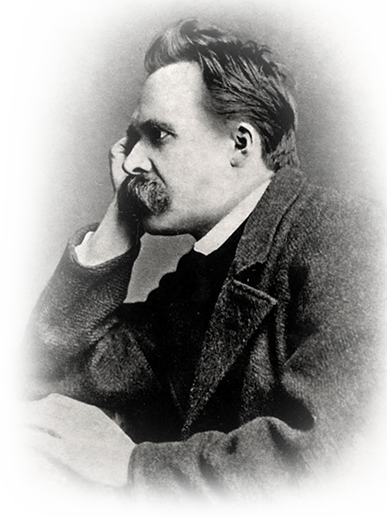[MA-WS-73]
HONESTY IN PAINTING
Raphael, who cared a great deal for the Church (so far as she could pay him), but, like the best men of his time, cared little for the objects of the Church’s belief, did not advance one step to meet the exacting, ecstatic piety of many of his patrons. He remained honest even in that exceptional picture which was originally intended for a banner in a procession—the Sistine Madonna. Here for once he wished to paint a vision, but such a vision as even noble youths without “faith” may and will have—the vision of the future wife, a wise, high-souled, silent, and very beautiful woman, carrying her first-born in her arms. Let men of an older generation, accustomed to prayer and devotion, find here, like the worthy elder on the left, something superhuman to revere. We younger men (so Raphael seems to call to us) are occupied with the beautiful maiden on the right, who says to the spectator of the picture, with her challenging and by no means devout look, “The mother and her child—is not that a pleasant, inviting sight?” The face and the look are reflected in the joy in the faces of the beholders. The artist who devised all this enjoys himself in this way, and adds his own delight to the delight of the art-lover. As regards the “messianic” expression in the face of the child, Raphael, honest man, who would not paint any state of soul in which he did not believe, has amiably cheated his religious admirers. He painted that freak of nature which is very often found, the man’s eye in the child’s face, and that, too, the eye of a brave, helpful man who sees distress. This eye should be accompanied by a beard. The fact that a beard is wanting, and that two different ages are seen in one countenance, is the pleasing paradox which believers have interpreted in accordance with their faith in miracles. The artist could only expect as much from their art of exposition and interpretation.
